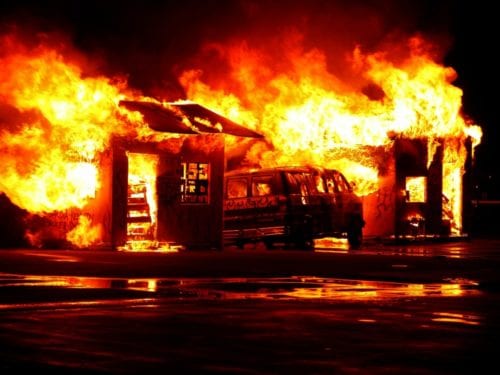Chicago-West, IL – Fire Accident Prevention In the Pharmaceutical Industry
Posted in: Industry News

Did you know that pharmaceutical business facilities are highly vulnerable to fire hazards? This article discusses how fire accidents can be prevented in the pharmaceutical industry.
Pharmaceutical, biotechnology and biomedical companies remain under significant threat from fire hazards. Some areas, such as warehouses, laboratories, bulk chemical facilities, and clean production facilities, remain more susceptible to fire incidents than other areas.
Possible causes of fire hazards in the pharmaceutical industry include contamination of products from heat, smoke, or a water sprinkler system, high ceilings, low temperatures, and densely stored products. Besides, many ingredients used in the production of drugs are shown to be combustible when they are in dust form.
In a typical accident, flammable material is exposed to an ignition source to cause a small fire. However, a second greater explosion can occur if the fine particles are present causing the dust to ignite. This second explosion is often much more severe than the first one, causing more harm to people, property, and products present around.
Steps to Prevent Fire Accidents in Pharmaceutical Facilities
Following these steps recommended by OSHA should help employers prevent fire-related risks in their companies and protect their employees and workplaces:
- Have proper dust collectionsystems in place. An approved, well-designed, properly installed, and maintained system will effectively capture dust before it escapes into the work area and pose any risk.
- Another way to safely handle combustible dust is to contain the dust within the systems, rooms, or equipment that are operated.
- To remove combustible dust that hasn’t been contained or captured, frequently and thoroughly clean overhead surfaces, concealed spaces, and all work areas using safe methods.
Here are some of the dust control measures issued by OSHA in their publication, NFPA 654:
- Prevent the escape of dust from ventilation systems or process equipment
- Install dust filters or collection systems
- In the presence of ignition sources, consider using cleaning methods that won’t produce dust clouds
- Organize and execute hazardous dust inspection, housekeeping, testing, and a documented control program outlining established methods and frequency of actions.
Final Word
Fire-related disasters in pharmaceutical companies occur mostly because supervisors and employees are unaware of the risks associated with hidden indoor air quality.
The single most dangerous source of fire is the highly combustible industrial dust that’s released in an environment where fine particles accumulate and react with heat. Combustion occurs in a split second when particles in an enclosed space are suspended in the air.
Hence, fire safety should never be taken lightly in such settings. Pharmaceutical business owners should place particular emphasis on identifying areas of potential risks and implementing proper dust-containing procedures and air cleaning measures.
Return to: Chicago-West, IL – Fire Accident Prevention In the Pharmaceutical Industry
Social Web